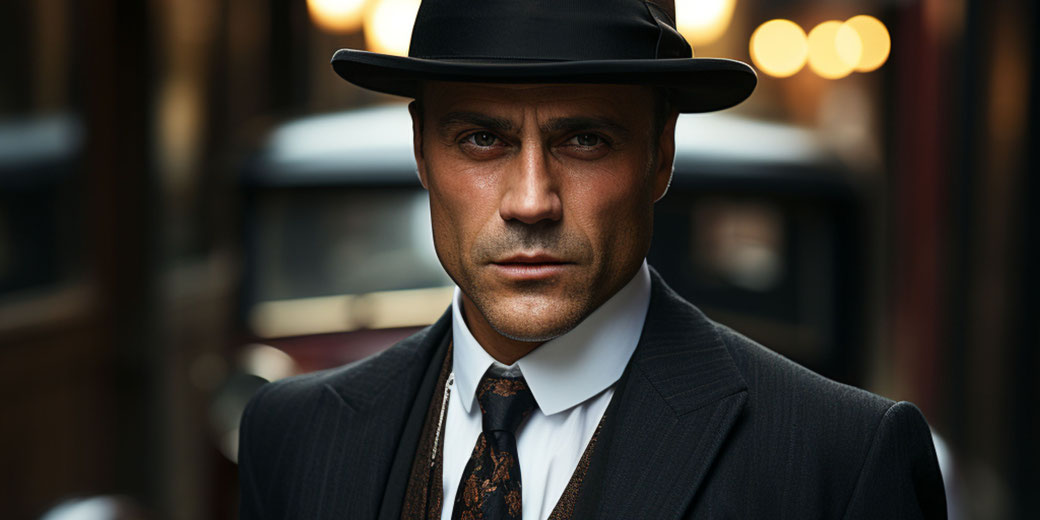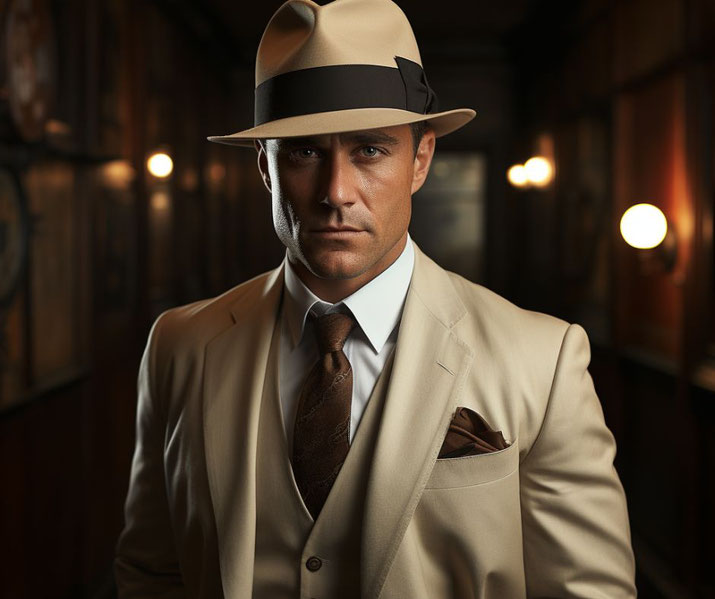Prohibition: The American social experiment that saw an explosion in organised crime

From 1920 to 1933, the United States embarked on a "noble experiment" to ban the manufacture, sale, and transportation of alcoholic beverages.
This strange law developed from the Temperance Movement's moral crusade against alcohol. However, it also led to a host of unintended consequences: from the rise of organized crime to widespread civil disobedience.
But what led to the adoption of such a radical policy?
How was Prohibition enforced, and why did it ultimately fail?
And finally, what were the social and economic impacts of this era?
The growing concern with alcohol before the 1920s
The journey to Prohibition began the early 19th century, when alcohol consumption in the United States was a significant part of daily life.
The Temperance Movement, which began in the 1820s, was a social and political campaign aimed at reducing the consumption of alcoholic beverages.
At the heart of this movement was a coalition of religious groups and women's rights activists who believed that alcohol was the primary cause of many societal problems, including rising crime, generational poverty, and violent domestic abuse.
As the Temperance Movement gained momentum throughout the 19th century, it evolved from advocating moderation in drinking to demanding total abstinence.
By the late 19th century, the movement had grown into a powerful political force.
Several states enacted laws restricting or banning the sale of alcohol, but these laws were often met with resistance and were difficult to enforce.
The early 20th century saw the Temperance Movement reach its apex. The Anti-Saloon League, founded in 1893, became one of the most effective lobbying groups in American history, skillfully aligning the temperance cause with other progressive era reforms.
The League's efforts, combined with the societal changes brought about by World War I, created a climate ripe for drastic action.
Many Americans, influenced by anti-German sentiment and wartime austerity, viewed German-American brewers with suspicion and saw the elimination of alcohol as a patriotic duty.

What was the18th Amendment and the Volstead Act?
The 18th Amendment, ratified on January 16, 1919, was the culmination of decades of advocacy by the Temperance Movement.
The amendment stated, "the manufacture, sale, or transportation of intoxicating liquors within, the importation thereof into, or the exportation thereof from the United States and all territory subject to the jurisdiction thereof for beverage purposes is hereby prohibited."
However, the amendment itself did not provide for the enforcement of this prohibition.
That task fell to the Volstead Act, officially known as the National Prohibition Act, which was passed by Congress later in 1919 over President Woodrow Wilson's veto.
Named after Andrew Volstead, the Congressman who sponsored the legislation, the Act provided for the enforcement of Prohibition.
It defined "intoxicating liquors" as any beverage containing more than 0.5% alcohol, effectively banning beer and wine as well as hard liquor.
The Act also outlined penalties for violations of Prohibition and established a Prohibition Bureau within the Department of the Treasury to enforce the law.
However, the Volstead Act was controversial and faced significant opposition.
Critics argued that it was overly intrusive and violated personal liberties.
Moreover, the Act was underfunded and lacked the necessary resources for effective enforcement.
The task of policing the entire nation's drinking habits proved to be a daunting and ultimately insurmountable challenge.
How was prohibition enforced?
The federal government, tasked with enforcing the Volstead Act, was ill-equipped to handle the sheer scale of the undertaking.
The Prohibition Bureau, established within the Department of the Treasury, was chronically underfunded and understaffed.
The task was further complicated by the widespread public resistance to Prohibition.
Many Americans, resentful of what they saw as an overreach by the federal government into their personal lives, openly flouted the law.
Illegal bars, known as speakeasies, sprang up in cities across the country, often protected by corrupt local officials.
Home brewing and distilling also became popular, and recipes for homemade alcohol circulated widely.
At the same time, the demand for alcohol led to a surge in smuggling and illegal production, known as bootlegging.
Alcohol was smuggled into the United States from Canada and the Caribbean, while domestically, illegal distilleries and breweries operated in defiance of the law.
The illegal alcohol trade became a lucrative business, leading to the rise of organized crime syndicates.
Despite these challenges, the government continued its efforts to enforce Prohibition throughout the 1920s.
Raids on speakeasies and bootlegging operations were common, and thousands of people were arrested for violations of the Volstead Act.
However, these efforts did little to curb the consumption of alcohol, and the public's disregard for the law led to a loss of respect for law enforcement and the government.
The rise of organised crime
One of the most significant and enduring consequences of Prohibition was the dramatic rise in organized crime.
The ban on alcohol created a lucrative black market, and criminal organizations were quick to capitalize on the opportunity.
These groups, which had previously been involved in various forms of petty crime, expanded their operations to include the production, distribution, and sale of illegal alcohol.
The most notorious of these criminal organizations was the Chicago Outfit, led by Al Capone.
Capone's empire, which at its height was estimated to be worth $100 million, was built on the illegal alcohol trade.
His organization operated breweries and distilleries, smuggled alcohol from Canada, and protected speakeasies from law enforcement.
Capone's success was due in part to his ability to bribe police officers, judges, and politicians, ensuring that his operations were largely protected from law enforcement.
However, competition for control of the lucrative alcohol trade led to an increase in violence.
The most famous of these was the St. Valentine's Day Massacre in 1929, in which seven members of Chicago's North Side Gang were murdered by Capone's men.
The violence and corruption associated with organized crime led to a public outcry and increased pressure on the government to take action.

The social and economic impacts of prohibition
Economically, the ban on alcohol led to a significant loss of revenue for the government.
Prior to Prohibition, taxes on alcohol constituted a substantial portion of federal, state, and local government income.
With the ban, this revenue source evaporated, leading to budget shortfalls and increased financial strain on government entities.
The alcohol industry itself, which had been a major part of the American economy, was also devastated.
Breweries, distilleries, and bars were forced to close or shift their production to non-alcoholic products, leading to job losses and economic hardship for those dependent on the industry.
At the same time, the rise of the illegal alcohol trade created a shadow economy, with profits going into the pockets of criminal organizations rather than contributing to the legitimate economy.
Socially, Prohibition had a profound impact on American society. It led to widespread civil disobedience and a loss of respect for law enforcement and the government.
The rise of speakeasies and the popularity of jazz music and dance, often associated with these illegal bars, contributed to the cultural revolution of the Roaring Twenties.
Moreover, Prohibition had a significant impact on public health. With the ban on legal alcohol, many people turned to dangerous alternatives, including industrial alcohol and homemade brews, which often contained toxic substances.
This led to an increase in alcohol-related deaths and illnesses.
How prohibition came to an end
By the late 1920s, it had become increasingly clear that Prohibition was failing.
The widespread flouting of the law, the rise in organized crime, and the loss of tax revenue were all factors that led to growing public disillusionment with the "noble experiment."
The onset of the Great Depression in 1929 further shifted public opinion, as many people began to see the potential economic benefits of legalizing and taxing alcohol.
The push for repeal was led by a diverse coalition of groups, including the Association Against the Prohibition Amendment and the Women's Organization for National Prohibition Reform.
These groups argued that Prohibition had not only failed to reduce alcohol consumption but had also led to a host of unintended negative consequences.
In 1932, the Democratic Party included the repeal of Prohibition in its platform, and the election of Franklin D. Roosevelt, who was personally in favor of repeal, marked a turning point in the fight against Prohibition.
In March 1933, Roosevelt signed the Cullen-Harrison Act, which legalized the sale of beer and wine with an alcohol content of 3.2% or less.
However, the final nail in the coffin for Prohibition came with the ratification of the 21st Amendment on December 5, 1933.
The amendment, which repealed the 18th Amendment, was ratified by state conventions rather than state legislatures, a process that had not been used since the adoption of the Constitution.
The 21st Amendment remains the only constitutional amendment to be ratified in this way and the only one to repeal a previous amendment.
What do you need help with?
Download ready-to-use digital learning resources
Copyright © History Skills 2014-2024.
Contact via email
With the exception of links to external sites, some historical sources and extracts from specific publications, all content on this website is copyrighted by History Skills. This content may not be copied, republished or redistributed without written permission from the website creator. Please use the Contact page to obtain relevant permission.





